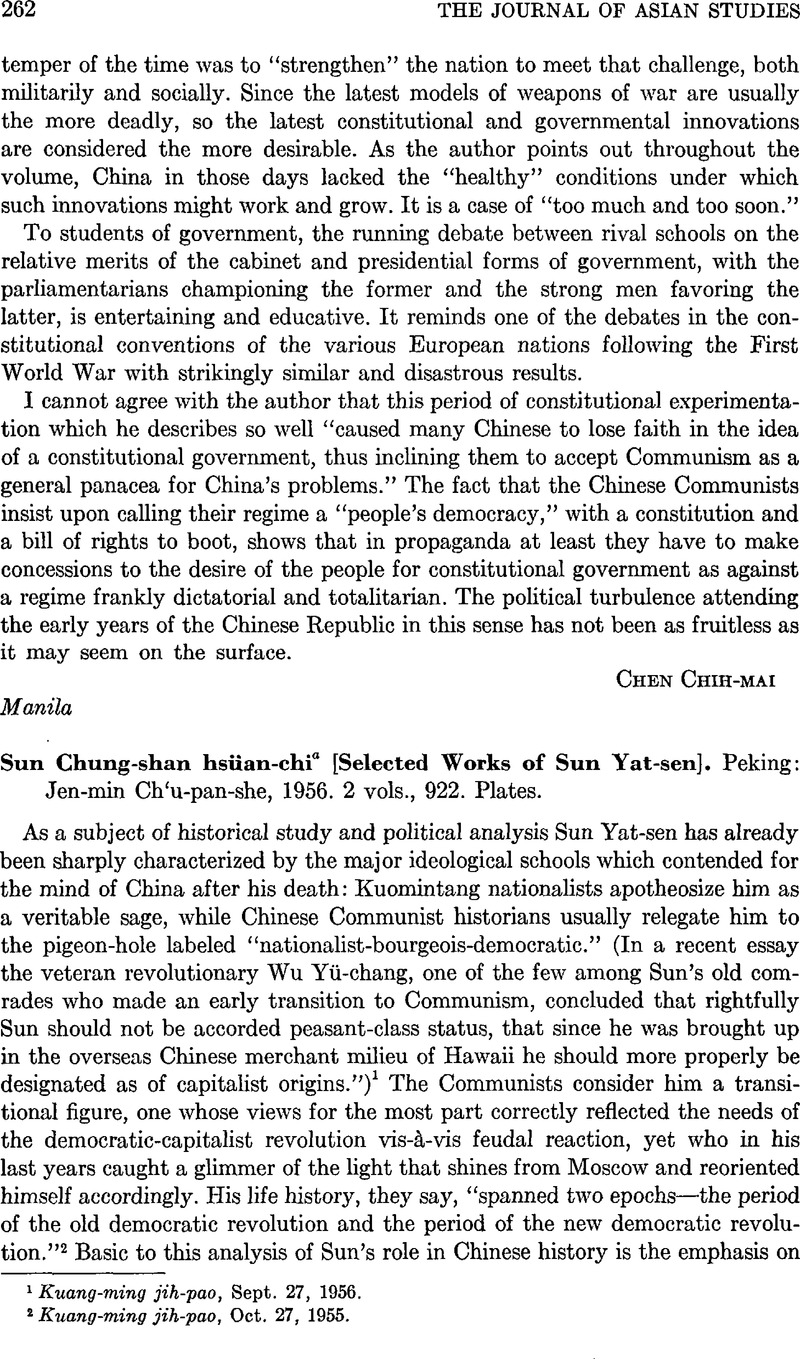Published online by Cambridge University Press: 23 March 2011

1 Kuang-ming jih-pao, Sept. 27, 1956.
2 Kuang-ming jih-pao, Oct. 27, 1955.
3 Selected Works, (Peking, 1st ed.) II, 664-665. According to the Hung-se wu-t'ai, Mao once jokingly remarked that he aimed to become the fourth proletarian to succeed in conquering China, the other three being the founders of the Han and Ming dynasties, and Sun Yat-sen.
4 See Whiting, Allen S., Soviet Policies in China, 1917-1924 (New York, 1954) for a discussion of this correspondence and a partial translation of Sun's reply based upon Russian sources, pp. 151–153Google Scholar.
5 This seems to be Sun's first official despatch to the Soviet government. According to some sources there had previously been a nonofficial cable from Sun to Lenin in 1918, sent through a Chinese living in America. This cable is said to be the earliest congratulatory message on the October Revolution and is reported as still being preserved in the Lenin Museum in Moscow. See Huan-ch'un, Hung, Wu-ssu shih-ch’i ti Chung-kuo ke-ming yun-tung (Peking, 1956), p. 35, note 2.Google Scholar
6 According to the Preface, parts of this letter have been deleted, but the text as printed here does not indicate the places and extent of deletion.
7 Wilbur, C. Martin and Lien-ying, Julie How, ed., Documents on Communism, Nationalism, and Soviet Advisers in China (New York, 1956), p. 393Google Scholar.
8 Ts'ung-K ch'üan-chi (Shanghai, 1930), IV, 349-368.
9 Ts'ung-li ch'üan-shu (Taipei, 1952), V, 147-160. This 10-vol. ed. is the most complete collection of Sun's works.
10 Kuang-ming jih-pao, Sept. 27, 1956.
11 Ts'ung-li ch'uan-shu, 7, ts'e 2, p. 718.
12 Ts'ung-li ch'Han-shu, VIII, 138. 18 Ts'ung-li ch'uan-shu, VII, 655.